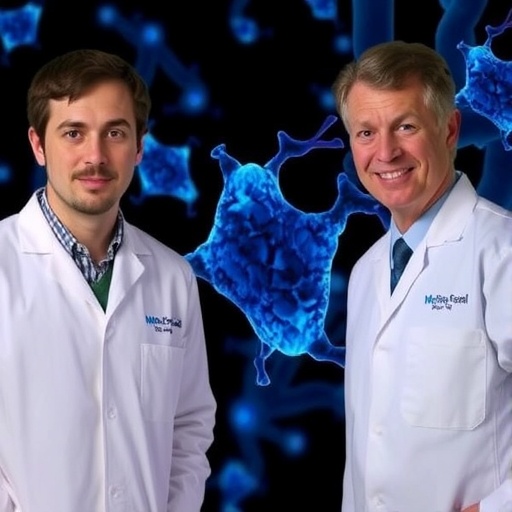Only one new drug has become available over the past 50 years for the estimated 1.5 million Americans and five million-plus people worldwide suffering from lupus, but new research has identified a previously unknown mechanism involved in the immune response that could provide an alternative therapy target.
Lupus (also known as systemic lupus erythematosus) is a chronic autoimmune disease in which the immune system is unable to distinguish the difference between foreign invaders, such as viruses and bacteria, from its own healthy body tissue, so it attacks itself, damaging skin, joints, and kidneys – among other organs – in the process. The disease is also marked by elevated levels of type I interferon, a substance normally secreted by immune cells in response to viral infections. The origin of the interferon signature in lupus has remained a mystery for years.
While working to solve this enigma, researchers, including Iwona Buskiewicz, Ph.D., and Andreas Koenig, Ph.D., assistant professors of pathology and laboratory medicine at the University of Vermont's Larner College of Medicine, uncovered an unexpected finding: a protein that normally signals an immune system pathway during viral infections was spontaneously activated in lupus patients, even in the absence of viral infection.
Their results were published recently in the journal Science Signaling.
"Typically, this protein – mitochondrial antiviral signaling or MAVS – is responsible for recognizing viral infections," explains Buskewicz, who adds that her team's publication is "the first paper showing that the interferon pathway can be activated by something other than viral infection or nucleic acids."
The culprit of this phenomenon? Oxidative stress in cells, which is sufficient to induce the clustering of MAVS at the mitochondria – the energy-producing organelles within each cell – and drive interferon production in the absence of viruses.
Why it is located at the mitochondria is still a missing piece of the puzzle, Buskewicz admits. She and her colleagues' findings suggest that in lupus patients, environmental stress may contribute to their production of type I interferon, which normally helps regulate immune system activity. In their study, introduction of an anti-oxidant reversed the clustering of MAVS and prevented the subsequent production of interferon.
Buskiewicz and her colleagues believe that MAVS could be targeted therapeutically with antioxidants directed to the mitochondria.
The next step for the research team members, who in addition to the Larner College of Medicine at the University of Vermont, hail from the Wellcome Trust, University of Glasgow, SUNY Upstate Medical Center, and Weill Cornell Medical College, is to collaborate with rheumatologists to further explore a potential therapy, by examining the degree of MAVS clustering and interferon levels before and after antioxidant therapy.
"We need to develop a drug that can revive the mitochondria," she says. "A more focused antioxidant therapy targeting the particular organelle may have more efficacy."
###
Media Contact
Jennifer Nachbur
[email protected]
802-656-7875
@uvmvermont
http://www.uvm.edu
############
Story Source: Materials provided by Scienmag




